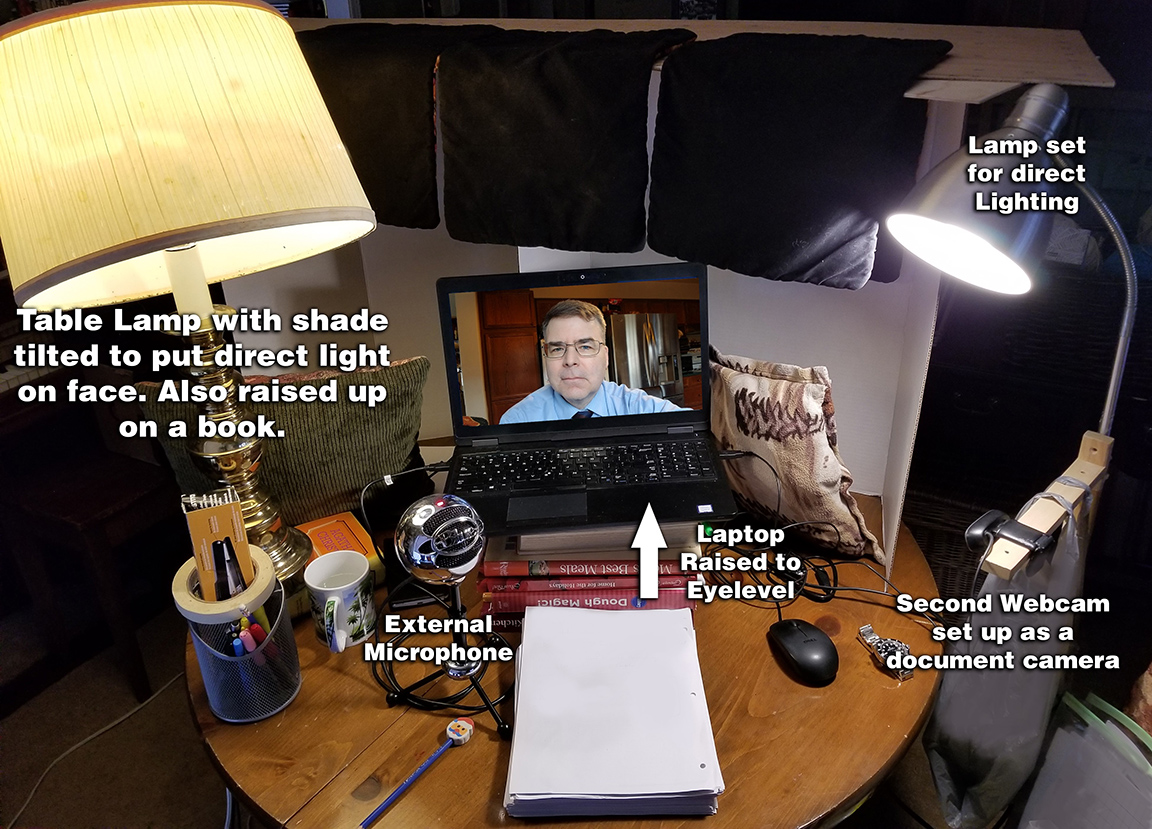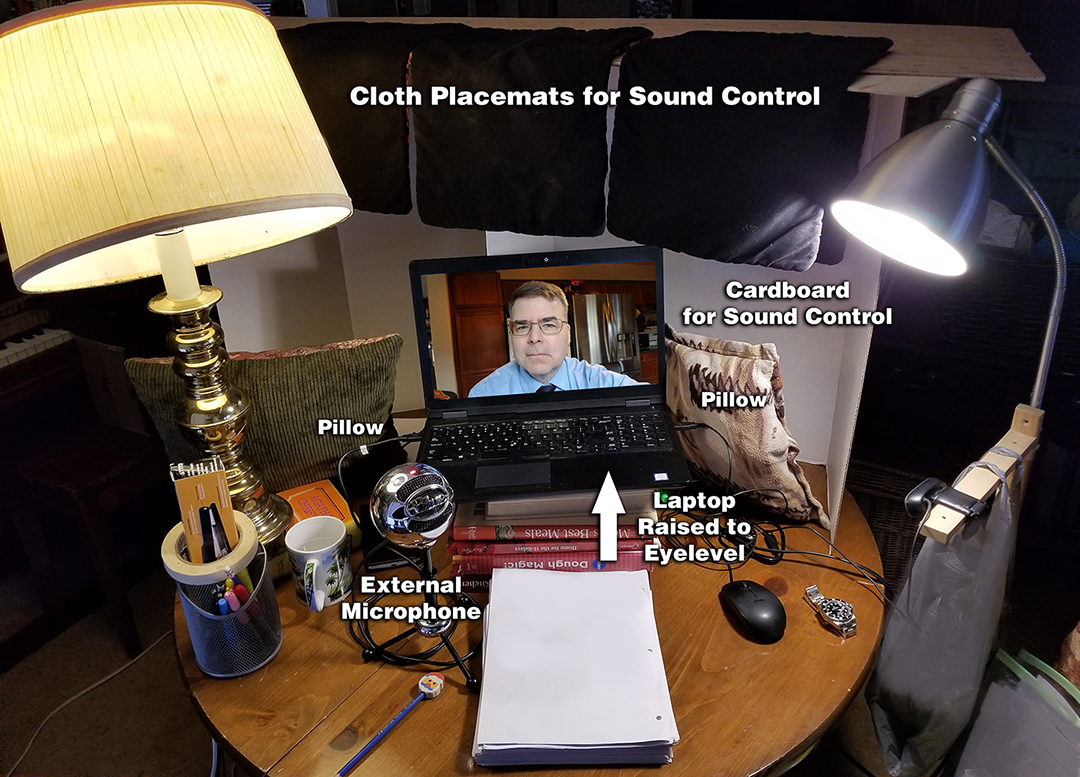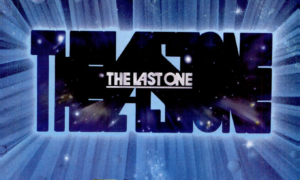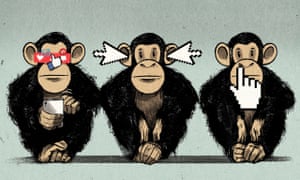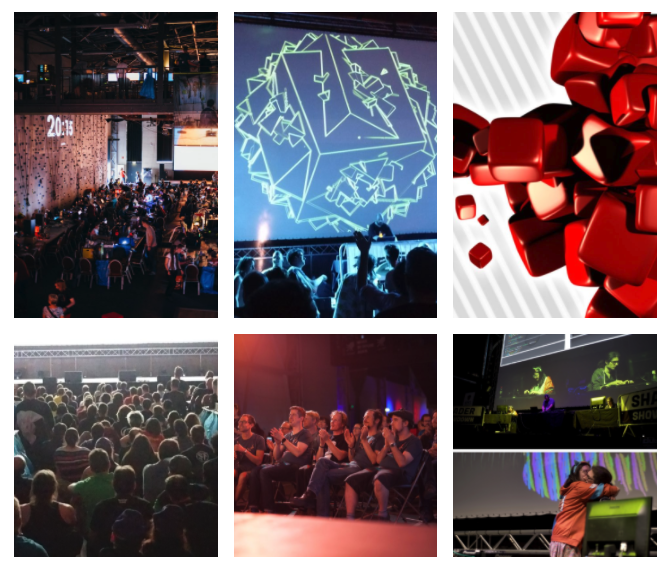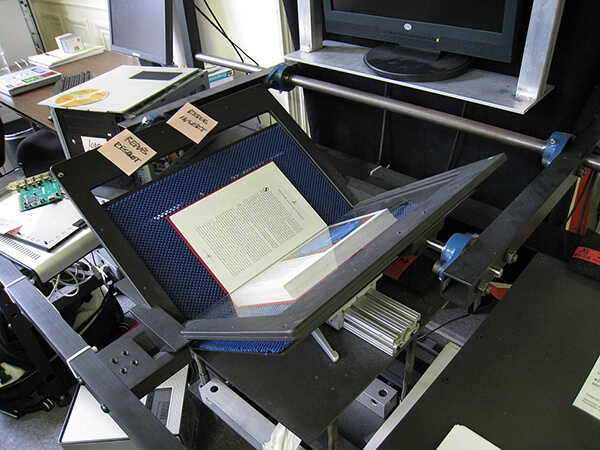Now that all of us are having to teach and meet over videoconferencing on our laptops, it is useful to get advice from the professionals. Chelsea sent me this link to Ryerson professor Gary Gould’s advince on How to Look and Sound Fabulous on a Webcam. The page covers practical things like lighting, positioning of the camera, backgrounds, framing and audio. I realize I need to rethink just having the laptop on my lap.
The Last One
Whatever happened to The Last One software? The Last One (TLO) was a “program generator” that was supposed to take input from a user who wasn’t a programmer and be able to generate a BASIC program.
TLO was developed by a company called D.J. “AI” Systems Ltd. that was set up by David James who became interested in artificial intelligence when he bought a computer for his business, and apparently got so distracted that he was bankrupted by that interest (and lost his computers). It was funded by an equally colourful character, Scotty Bambury who made his money as a tire dealer in Somerset. (See here and here.)
Personal Computer magazine cover from here
The name (The Last One) refers to the expectation that this would be the last software you would need to buy. As the cover image above shows, they were imagining programmers being put out of work by an AI that could reprogram itself. TLO would be the last software you had to buy and possibly the first AI capable of recursively improving itself. DJ AI could have been spinning up the seed AI that could lead to the singularity!
Here is some of the text from an ad for TLO. The text ran under the spacey headline at the top of this post.
The first program you should buy. …
THE LAST ONE … The program that writes programs!
Now, for the first time, your computer is truly ‘personal’. Now, simply and easily, you can create software the way you want it. …
Yet another sense of “personal” in “personal computer” – a computer where all your software (except, of course, TLO) is personally developed. Imagine a computer that you trained to do what you needed. This was the situation with early mainframes – programmers had to develop the applications individually for each system, they just didn’t have TLO.
The tech ‘solutions’ for coronavirus take the surveillance state to the next level
Neoliberalism shrinks public budgets; solutionism shrinks public imagination.
Evgeny Morozov has crisp essay in The Guardina on how The tech ‘solutions’ for coronavirus take the surveillance state to the next level. He argues that neoliberalist austerity cut our public services back in ways that now we see are endangering lives, but it is solutionism that constraining our ideas about what we can do to deal with situations. If we look for a technical solution we give up on questioning the underlying defunding of the commons.
There is nice interview between Natasha Dow Shüll Morozov on The Folly of Technological Solutionism: An Interview with Evgeny Morozov in which they talk about his book To Save Everything, Click Here: The Folly of Technological Solutionism and gamification.
Back in The Guardian, he ends his essay warning that we should focus on picking between apps – between solutions. We should get beyond solutions like apps to thinking politically.
The feast of solutionism unleashed by Covid-19 reveals the extreme dependence of the actually existing democracies on the undemocratic exercise of private power by technology platforms. Our first order of business should be to chart a post-solutionist path – one that gives the public sovereignty over digital platforms.
Finland accepts the Demoscene on its national UNESCO list of intangible cultural heritage of humanity
“Demoskene is an international community focused on demos, programming, graphics and sound creatively real-time audiovisual performances. [..] Subculture is an empowering and important part of identity for its members.”
The Art of Coding has gotten Demoscene listed by Finland in the National Inventory of Living Heritage, Breakthrough of Digital Culture: Finland accepts the Demoscene on its national UNESCO list of intangible cultural heritage of humanity. This means that Demoscene may be the first form of digital culture put forward to UNESCO as a candidate intangible cultural heritage (ICH).
In a previous blog post I argued that ICH is a form of culture that would be hard to digitize by definition. I could be proved wrong with Demoscene. Or it could be that what makes Demoscene ICH is not the digital demos, but the intangible cultural scene, which is not digital.
Either way, it is interesting to see how digital practices are also becoming intangible culture that could disappear.
You can learn more about Demoscene from these links:
- Demoscene on Wikipedia
- Demoscene Documentary series on YouTube
- Demoscene in wiki on Finnish ICH
Robots Welcome to Take Over, as Pandemic Accelerates Automation – The New York Times
But labor and robotics experts say social-distancing directives, which are likely to continue in some form after the crisis subsides, could prompt more industries to accelerate their use of automation. And long-simmering worries about job losses or a broad unease about having machines control vital aspects of daily life could dissipate as society sees the benefits of restructuring workplaces in ways that minimize close human contact.
The New York Times has a story pointing out that The Robots Welcome to Take Over, as Pandemic Accelerates Automation. While AI may not be that useful in making the crisis decisions, robots (and the AIs that drive them) can take over certain jobs that need doing, but which are dangerous to humans in a time of pandemic. Sorting trash is one example given. Cleaning spaces is another.
We can imagine a dystopia where everything can run just fine with social (physical) distancing. Ultimately humans would only do the creative intellectual work as imagined in Forester’s The Machine Stops (from 1909!) We would entertain each other with solitary interventions, or at least works that can be made with the artists far apart. Perhaps green-screen technology and animation will let us even act alone and be composited together into virtual crowds.
Embedded Voyant panel
This post is a demonstration of how a Voyant panel or hermeneutica can be embedded in a WordPress post. See our Voyant tutorials at dialogi.ca.
To embed the panel I created a custom HTML block. In it I pasted the <iframe> element exported from the Voyant panel I wanted. While editing I see the HTML code, when I Preview (either the block or the whole post) or publish then I see the Voyant panel in place. Try playing with it!
Digitization in an Emergency: Fair Use/Fair Dealing and How Libraries Are Adapting to the Pandemic
In response to unprecedented exigencies, more systemic solutions may be necessary and fully justifiable under fair use and fair dealing. This includes variants of controlled digital lending (CDL), in which books are scanned and lent in digital form, preserving the same one-to-one scarcity and time limits that would apply to lending their physical copies. Even before the new coronavirus, a growing number of libraries have implemented CDL for select physical collections.
The Association of Research Libraries has a blog entry on Digitization in an Emergency: Fair Use/Fair Dealing and How Libraries Are Adapting to the Pandemic by Ryan Clough (April 1, 2020) with good links. The closing of the physical libraries has accelerated a process of moving from a hybrid of physical and digital resources to an entirely digital library. Controlled digital lending (where only a limited number of patrons can read an digital asset at a time) seems a sensible way to go.
To be honest, I am so tired of sitting on my butt that I plan to spend much more time walking to and browsing around the library at the University of Alberta. As much as digital access is a convenience, I’m missing the occasions for getting outside and walking that a library affords. Perhaps we should think of the library as a labyrinth – something deliberately difficult to navigate in order to give you an excuse to walk around.
Perhaps I need a book scanner on a standing desk at home to keep me on my feet.
How useful is AI in a pandemic?
DER SPIEGEL: What are the lessons to be learned from this crisis
Dräger: It shows that common sense is more important than we all thought. This situation is so new and complicated that the problems can only be solved by people who carefully weigh their decisions. Artificial intelligence, which everyone has been talking so much about recently, isn’t much help at the moment.
Absolutely Mission Impossible: Interview with German Ventilator Manufacturer, Speigel International, Interviewed by Lukas Eberle und Martin U. Müller, March 27th, 2020.
There are so many lessons to be learned from the Coronavirus, but one lesson is that artificial intelligence isn’t always the solution. In a health crisis that has to do with viruses in the air, not information, AI is only indirectly useful. As the head of production of the German Drägerwerk ventilator manufacturer company puts it, the challenge of choosing who to sell ventilators to in this time is not one to handed over to an AI. Humans carefully weighing decisions (and taking responsibility for them) is what is needed in a crisis.
The Machine Stops
Imagine, if you can, a small room, hexagonal in shape, like the cell of a bee. It is lighted neither by window nor by lamp, yet it is filled with a soft radiance. There are no apertures for ventilation, yet the air is fresh. There are no musical instruments, and yet, at the moment that my meditation opens, this room is throbbing with melodious sounds. An armchair is in the centre, by its side a reading-desk — that is all the furniture. And in the armchair there sits a swaddled lump of flesh — a woman, about five feet high, with a face as white as a fungus. It is to her that the little room belongs.
Like many, I reread E.M. Forester’s The Machine Stops this week while in isolation. This short story was published in 1909 and written as a reaction to The Time Machine by H.G. Wells. (See the full text here (PDF).) In Forester it is the machine that keeps working the utopia of isolated pods; in Wells it is a caste of workers, the Morlochs, who also turn out to eat the leisure class. Forester felt that technology was likely to be the problem, or part of the problem, not class.
In this pandemic we see a bit of both. Following Wells we see a class of gig-economy deliverers who facilitate the isolated life of those of us who do intellectual work. Intellectual work has gone virtual, but we still need a physical layer maintained. (Even the language of a stack of layers comes metaphorically from computing.) But we also see in our virtualized work a dependence on an information machine that lets our bodies sit on the couch in isolation while we listen to throbbing melodies. My body certainly feels like it is settling into a swaddled lump of fungus.
An intriguing aspect of “The Machine Stops” is how Vashti, the mother who loves the life of the machine, measures everything in terms of ideas. She complains that flying to see her son and seeing the earth below gives her no ideas. Ideas don’t come from original experiences but from layers of interpretation. Ideas are the currency of an intellectual life of leisure which loses touch with the “real world.”
At the end, as the machine stops and Kuno, Vashti’s son, comes to his mother in the disaster, they reflect on how a few homeless refugees living on the surface might survive and learn not to trust the machine.
“I have seen them, spoken to them, loved them. They are hiding in the mist and the ferns until our civilization stops. To-day they are the Homeless — to-morrow—”
“Oh, to-morrow — some fool will start the Machine again, to-morrow.”
“Never,” said Kuno, “never. Humanity has learnt its lesson.”
2020 Brings the Death of IT | I, Cringely
It’s the end of IT because your device will no longer contain anything so it can be simply replaced via Amazon if it is damaged or lost, with the IT kid in the white shirt becoming an Uber driver.
How many of us have laughed at The IT Crowd? I remember when I was in support at the University of Toronto and would advise people to turn their computer off and back on. Suprisingly that actually helped in some cases, as did wiggling the cable to the printer (back when there were lots of pins.) Robert X. Cringely, who is apparently not the only Cringely, has a prediction that 2020 Brings the Death of IT in his I, Cringely site. He predicts that all of us working at home in isolation is going to accelerate a computing paradigm called SASE (Secure Access Service Edge – pronounced “sassy”) where individual devices are connected to cloud-based services. IT will disappear because to fix something you will just order another from Amazon. There will be no fixing the local, just replacing it. The rest is all up in the cloud and maintained by someone like Google. Locally we just have appliances.
